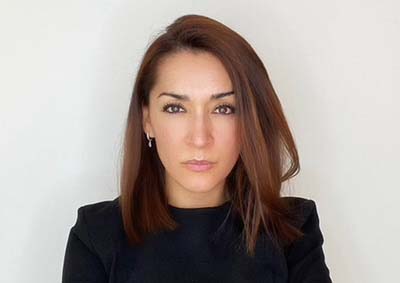A New Roadblock for Diverse Creators and Audiences (B+C Guest Blog)
Why regulating streaming services like traditional pay TV providers would stifle inclusion efforts

After decades of primetime exclusion, diverse creators and audiences are finally making progress and getting new options and representation thanks to the rise of innovative streaming services. A 2023 UCLA study found that “women and people of color are finding more job opportunities in streaming release” and in 2021 Nielsen reported that “Americans want more diversity on TV and they’re increasingly finding more of it on streaming platforms.” Moreover, culturally specific streaming services like AllBlk and Pantaya have emerged giving diverse voices exciting new opportunities to find audiences and succeed.
But this long-sought progress is now being threatened by a pressure campaign orchestrated by a small number of powerful traditional broadcast TV groups. They want the government to impose outdated cable regulations on internet streaming, which would force streamers to carry more of these broadcasters’ programming, and pay more for it. A June 2023 letter from Sen. Maria Cantwell (D-Wash.) asks the FCC to review the issue.
But this approach would turn back the clock on American media and erect new barriers for diverse creators trying to gain a foothold on modern streaming services. The broadcasters’ scheme would immediately impact services offering live TV and a mix of channels, such as Hulu Live Plus, YipTV, and YouTubeTV, but could also extend to a diverse mix of on-demand services like Netflix and Disney Plus, as well as ALLBLK and Revry.
The big “local” broadcast groups — actually multibillion-dollar conglomerates of TV stations across the country, like Nexstar Media Group, Sinclair and Gray Television — argue that, because live TV streamers offer multiple shows and channels, they are the same as traditional cable and satellite television systems and should be regulated the same way. The decades-old rules for cable and satellite TV, however — including required channel lineups, mandatory government fees and complicated billing — created the very headaches that American households are finally relieved from with the advent of streaming.
Those rules also require every cable and satellite subscriber to purchase access to local TV channels, even when they can receive them free over the air! It’s no wonder big broadcasters now want the government to force streaming subscribers to also pay.
These old cable and satellite regulations led to nationwide consolidation of less diverse local TV broadcasting and more expensive and bloated channel packages from subscription cable and satellite services. Competitive streaming options, on the other hand, offer more variety, less expense and greater flexibility. This free and open competition — which applies across the entire streaming ecosystem from on demand services like Netflix to platform services like YouTube TV — has made it possible for diverse programmers and creators to gain a foothold and bring new options to underserved and underrepresented audiences and communities.
On-screen and behind the camera, diverse entrepreneurs are creating new programming, companies, and channels that look like, and serve, all of America. But the big broadcasters’ self-serving proposal would tilt the scales against new voices by forcing streamers to pay more for legacy programming owned by traditional media, exhausting funds that would otherwise be available for diverse new shows and channels.
The smarter way to stay on top of broadcasting and cable industry. Sign up below
The broadcast groups say they need regulatory help to fund local programming like news, weather, and sports. But these stations can already negotiate with streaming services to license their news and other programming at whatever price the market will bear. They aren’t seeking the right to negotiate — which they already have — they are asking to tilt the playing field for negotiations in their favor so they can get an above market price and gain a captive audience. Which in many cases they then fail to serve with genuinely local voices and programming, bringing in national news and editorial views that are often widely out of step with the communities they claim to serve.
Regulator Skepticism Is Warranted
In 2014, President Barack Obama’s FCC considered this issue in detail and concluded that legacy cable and satellite rules were a bad fit for emerging live TV streaming services. President Joe Biden’s FCC chair, Jessica Rosenworcel, has rightly continued this skepticism — going even further and warning that the laws governing the FCC do not even permit it to apply rules designed for one kind of technology (cable and satellite systems) to another (internet-based streamers). And the thriving and innovative streaming ecosystem consumers are enjoying today — bursting at the seams with new stories, voices, and options — has borne out the wisdom of those judgments.
The FCC should look forward and focus its energies on fixing real programs that plague our digital lives — from misinformation and hate speech online to the lack of internet access in multicultural communities and the lasting problem of the digital divide. It should not wind back the clock on progress by tipping the scales in programming negotiations against diverse new streaming services and options to pad the bottom line of wealthy broadcast chains.
Rosa Mendoza is president and CEO of ALLvanza, a nonpartisan policy nonprofit that advocates for Latinos and other underserved communities primarily on issues related to tech and innovation.
